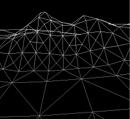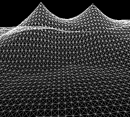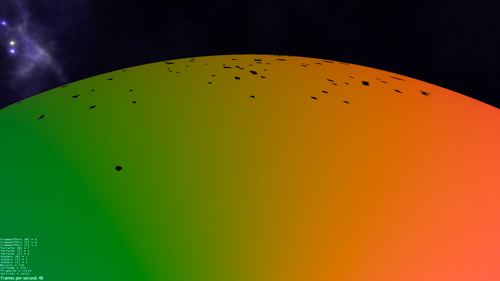While reading some articles over the internet I am deeply starting to thing, that the quad-based LoD algorithm wasn't the best idea. I think so mainly because using such technique on a rather flat surfaces I still will have a lot of unneeded detail.
To demonstrate what I mean, I have found some pictures on the internet.
 The picture to the left illustrates something like a hill near the flat ground. The hill itself is more "extruded" from the surface, and it needs more vertexes to represent all it's slopes and caves. It's more logical to add extra detail to the hills, and do not extra detail where the area is completely flat. This is the algorithm I need to implement if I want more complex terrain look more natural. This algorithm is called Optimally Adapted Meshes (OAM).
The picture to the left illustrates something like a hill near the flat ground. The hill itself is more "extruded" from the surface, and it needs more vertexes to represent all it's slopes and caves. It's more logical to add extra detail to the hills, and do not extra detail where the area is completely flat. This is the algorithm I need to implement if I want more complex terrain look more natural. This algorithm is called Optimally Adapted Meshes (OAM).
 Unlike previous picture, this one exactly represents the technique I use at the moment. It can be seen with naked eyes that there are way more vertexes used on the areas, where you actually do not need them.
Unlike previous picture, this one exactly represents the technique I use at the moment. It can be seen with naked eyes that there are way more vertexes used on the areas, where you actually do not need them.
The OAM algorithm, or it's implementation to visualize terrains in realtime (Real-time Optimally Adapted Meshes, or ROAM) uses a height map to determine for each vertex it's error value - the heights around it so see if the area around it is flat or it needs more detail. Based on error value it determines where the extra detail should be added and where it's ok to leave the same amount of vertexes at the moment.
I also need to think in parallel the scaling problem, and implement it inside.
Links
Roam info & papers: 1, 2, 3, 4


.png)


